
While reporting from the standoff at Standing Rock in September, Democracy Now! sat down with Standing Rock Sioux tribal historian LaDonna Brave Bull Allard to speak about another attack against her tribe—this one on the same day 153 years before. On September 3, 1863, the U.S. Army massacred more than 300 members of the Standing Rock Sioux Tribe in what became known as the Whitestone massacre. LaDonna Brave Bull Allard is not only the tribal historian, she’s also one of the founders of the Sacred Stone Camp, launched on her land April 1, 2016, to resist the Dakota Access pipeline.
Transcript
AMY GOODMAN: That day, September 3rd, we also sat down with Standing Rock Sioux tribal historian LaDonna Brave Bull Allard to speak about another attack against her tribe, this one on the same day 153 years before. It was on September 3rd, 1863, that the U.S. Army massacred more than 300 members of the Standing Rock Sioux Tribe in what’s become known as the Whitestone massacre. LaDonna Brave Bull Allard is not only the tribal historian, but also one of the founders of the Sacred Stone Camp, the first resistance camp launched on her land April 1st, 2016, to resist the Dakota Access pipeline.
LADONNA BRAVE BULL ALLARD: A hundred and fifty-three years ago—fifty-two years ago, the Whitestone massacre happened, which the people in this community, the Cannon Ball community, are from, descendants of that massacre. We are the survivors of that massacre. One of the things that, you know, I always say is, this massacre happened, America forgot they killed us. And we have just—spending this time trying to figure out how to survive. So, we were the wrong Indians that they killed at that time. The Dakota Wars were happening in 1863. And so the government put up these armed forces to go after the Isanti, the Santee, and so they put this military action together.
On the morning of September 3rd, our people were gathered, as we do every year at this time. We gather because it’s harvest time. The fruit and vegetables are ready. It is a time when we are doing the buffalo call, and we have ceremonies to call the buffaloes for the people to come to hunt, so that we can prepare the meat for winter. So this is what was happening at Whitestone at that time. And so, we have a large gathering of 4,000 people. And I think that’s kind of unique. There’s almost 4,000 people here. And so, we had all of these communities coming in together to go into this trade. And as people are preparing buffalo hides and getting dry meat ready, they are also visiting, making relatives, having marriages. All of these things are happening in this camp. And so, they say the soldiers are coming. And our leaders said, “We have never had an argument with the white people. We have only been at peace. We do not have a treaty with them.” And so, our people got together and said, “We heard that if you take a white flag, they will honor that to talk with us.” So they took a white flour sack, and they put it on a stick, and our leaders all went out into the soldiers to say they wanted to talk.
AMY GOODMAN: Your grandfather was one of them?
LADONNA BRAVE BULL ALLARD: Yes. So my grandfather was a medicine man. His name was Tatanka Ohikita, Brave Buffalo. So, Brave Buffalo was among them, with the chiefs. They went out to talk to the soldiers. The soldiers surrounded them and took them as a prisoners of war and cordoned them off from their people. And so, the people were watching. And just like we are taught, automatically, if there is an enemy coming in, we gather all the children in the center, all the women. People were starting to tear down their lodges. People were trying to move in the chaos. So the first things the women did is they tied the babies to the dogs, they tied the children to the horses, and they shooed the dogs and the horses out of the camp. And then they gathered what they could, and they started running.
Well, at the camp, at Whitestone, they came down, and there’s this ravine. And so the people started making their way down to the ravine. And it’s kind of bizarre to us that these soldiers came in just as the sun was going down. And so, they were going to the ravine. And the soldiers came on this top of the ravine and this top of the ravine, and started shooting the women and children in the ravine. And one of the—one of our soldiers went out in front and broke the open, so that people can continue running. So, as night is falling, my grandma, Nape Hota Win, Grey Hand, she was running, and, she said, all of a sudden she had a sharp pain in her hip, and she fell down.
AMY GOODMAN: She was a child.
LADONNA BRAVE BULL ALLARD: Yeah, she was nine years old. And she laid on that ground, and she spent the night calling, “Ina! Ina!” or “Mom! Mom!” with no answer. Everywhere, she could hear the crying and screams, the songs of people dying. And as the sun came over and she could see everything that was happening, two of the soldiers came and grabbed her and threw her in the back of a buckboard. I am unsure of why that happened, because they went around, and they killed the other wounded. Why they did not kill my grandmother, I do not know.
So she laid in the buckboard as she watched the soldiers come and start killing the dogs and the babies, killing the horses, killing the wounded. They gathered up all of our property—the tents, the meat, the hides, everything we own. And we had one section of soldiers sitting down there poking holes in the bottom of our pots. And they gathered all that, and they started this great big fire, burning all our food, our homes, everything. They said that there was so much buffalo meat that they burned, that tallow ran down like rivers out into the creeks. And the people ran. For three to four days they ran, as the soldiers continued to chase and kill them. Part of our people came across here. This used to be a narrow crossing, where they crossed. And they crossed over on this side of the river to get from the soldiers.
And one of the things that we always say at this massacre is they forgot they killed us, and we weren’t even the right Indians.
AMY GOODMAN: That river crossing that you’ve described, the people fleeing from the soldiers, that’s where the Dakota Access pipeline will be built?
LADONNA BRAVE BULL ALLARD: Yes. Right where the Dakota Access pipeline is the area where our people made it across the river. It is our major river crossing there. And I will say that where this pipeline is going underneath the Missouri River is also a burial site, and so they’ll be going underneath this burial site. We are very concerned because any type of motion can bring up our remains.
AMY GOODMAN: Standing Rock Sioux tribal historian LaDonna Brave Bull Allard. We’ll be back in a minute.

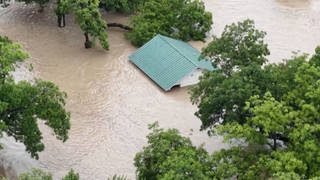

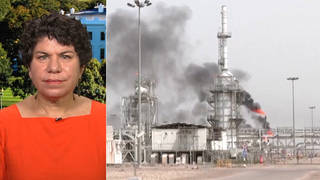
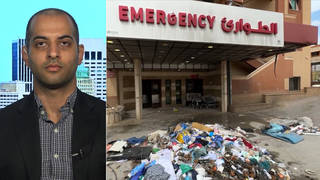
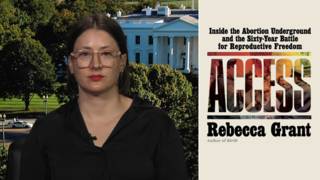
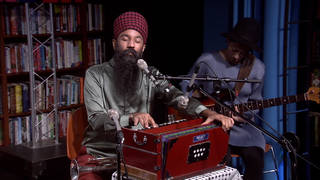

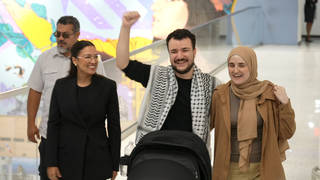

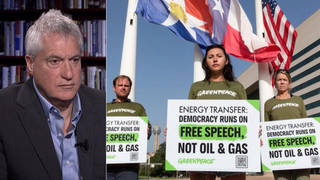

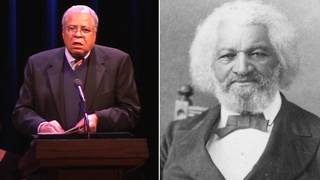
Media Options